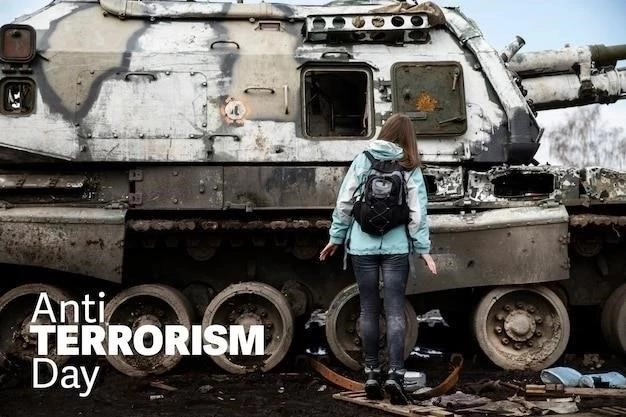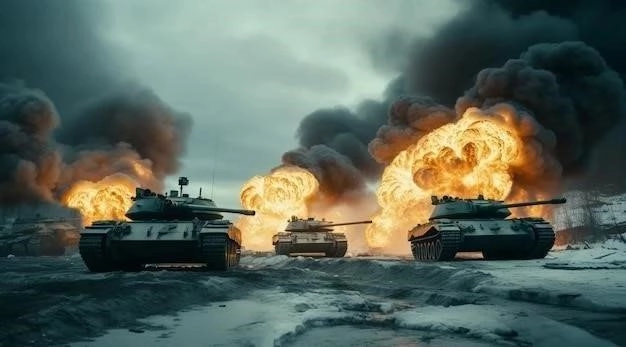Historical Context of US-Russia Relations
U.S.-Russia relations are officially recognized as beginning with Russia’s recognition of the United States in October of 1803. The relationship between the two nations has been tumultuous, characterized by periods of cooperation and conflict. The Cold War era (1947-1991) saw extreme ideological and geopolitical rivalry.
Key Points of Contention
The dissolution of the Soviet Union in 1991 brought hope for a new era of cooperation between the U.S. and Russia. However, several points of contention have prevented the establishment of a genuinely collaborative relationship, leading to heightened tensions and distrust. These disagreements, rooted in historical grievances, geopolitical aspirations, and ideological differences, form the crux of the current friction between the two nations.
Among the most contentious issues are the ongoing conflict in Ukraine, concerns regarding arms control and strategic stability, and cybersecurity and information warfare. The Ukrainian conflict, stemming from Russia’s 2014 annexation of Crimea and support for separatists in eastern Ukraine, has significantly soured relations. The U.S. and its allies have imposed sanctions on Russia for its actions, further escalating tensions.
Furthermore, the issue of arms control, particularly concerning nuclear weapons, remains a significant source of tension. The New START treaty, the last remaining major arms control agreement between the two nations, is under significant strain, with Russia recently suspending its participation. This development raises concerns about a potential arms race and the erosion of strategic stability.
Adding another layer of complexity, cybersecurity and information warfare have become increasingly prominent points of contention. Allegations of Russian interference in the 2016 U.S. presidential election and ongoing cyberattacks attributed to Russian actors have fueled mistrust and hostility. These actions underscore the challenges of navigating the digital age, where traditional warfare has expanded into the cyber realm.
2.1 The Ukrainian Conflict and its Global Ramifications
The ongoing conflict in Ukraine, ignited in 2014 with Russia’s annexation of Crimea and subsequent support for separatists in the eastern Donbas region, stands as a formidable obstacle in U.S.-Russia relations and a significant threat to global stability. This conflict transcends a mere regional dispute, carrying profound geopolitical ramifications that reverberate far beyond Ukraine’s borders.
Firstly, the conflict represents a fundamental challenge to the post-Cold War European security architecture. Russia’s actions have been widely condemned as a violation of Ukraine’s sovereignty and territorial integrity, as well as a breach of international law. This has led to heightened tensions between Russia and the West, with NATO bolstering its military presence in Eastern Europe and imposing sanctions on Russia, further fueling an atmosphere of mistrust and animosity.
Beyond Europe, the conflict has exacerbated existing geopolitical fault lines. It has intensified the rivalry between the U.S. and Russia, with each side accusing the other of destabilizing actions and pursuing aggressive foreign policies. This dynamic has contributed to a more fractured international order, hindering cooperation on pressing global challenges such as climate change, pandemics, and nuclear proliferation.
2.2 Arms Control and Strategic Stability
Arms control, particularly regarding nuclear weapons, stands as a cornerstone of strategic stability and a critical aspect of U.S.-Russia relations. However, the post-Cold War era has witnessed a gradual erosion of this framework, leading to heightened anxieties and an increased risk of miscalculation between the two nuclear superpowers.
The New START treaty, which entered into force in 2011, represents the last remaining pillar of bilateral nuclear arms control. This agreement limits both countries’ deployed strategic nuclear warheads and delivery systems, imposing verification mechanisms to ensure compliance. Despite its significance, the treaty’s future remains uncertain. Russia’s recent decision to suspend its participation, citing tensions with the West, has cast a shadow over prospects for future arms control agreements.
Furthermore, concerns extend beyond numerical limitations on deployed weapons. The development and deployment of new technologies, such as hypersonic missiles and advanced conventional weapons, pose new challenges to strategic stability. These systems blur the lines between conventional and nuclear weapons, potentially increasing the risk of misinterpretation and escalation during a crisis.

2.3 Cybersecurity and Information Warfare
The digital age has ushered in a new era of geopolitical competition, with cybersecurity and information warfare emerging as central features of the strained relationship between the United States and Russia. These domains represent an evolving battleground where traditional notions of conflict blur, and the lines between peace and hostility become increasingly opaque.
Accusations of Russian interference in the 2016 U.S. presidential election, aimed at sowing discord and undermining democratic processes, significantly escalated tensions. The U.S. intelligence community concluded with high confidence that Russia orchestrated a multifaceted campaign involving hacking, disinformation, and social media manipulation to influence the election outcome. This event highlighted the vulnerability of democratic institutions to foreign interference in the digital age.
Furthermore, both countries engage in ongoing cyber espionage and cyberattacks targeting critical infrastructure, government agencies, and private companies. These activities range from intelligence gathering to disruptive attacks capable of causing significant economic damage or disrupting essential services. The attribution of cyberattacks often remains opaque, contributing to a climate of mistrust and hindering efforts to establish norms of responsible state behavior in cyberspace.

Geopolitical Dimensions
The current state of U.S.-Russia relations extends beyond bilateral disagreements, reflecting broader geopolitical shifts and power dynamics reshaping the international order. The rise of China, NATO expansion, and differing interpretations of spheres of influence contribute to a complex web of interconnected factors influencing the trajectory of U.S.-Russia relations.
The emergence of China as a global power, both economically and militarily, has significantly altered the geopolitical landscape. As China’s influence expands, the U.S. and Russia find themselves simultaneously competing and cooperating with Beijing. This complex interplay creates both opportunities and challenges, shaping their strategic calculations and influencing their interactions on the global stage.
NATO expansion eastward since the end of the Cold War remains a point of contention. While the U.S. views NATO enlargement as promoting stability and democracy, Russia perceives it as a direct threat to its security interests, encroaching on its traditional sphere of influence. This disagreement has fueled mistrust and contributed to the current impasse in relations.

3.1 The US-China Rivalry and its Impact on US-Russia Relations
The emergence of China as a global power has introduced a complex dynamic into the U.S.-Russia relationship, creating both points of convergence and divergence. While the U.S. increasingly views China as its primary strategic competitor, Russia’s relationship with China is more nuanced, characterized by elements of cooperation, competition, and caution.
On the one hand, the shared rivalry with the United States has fostered a degree of tactical alignment between Russia and China. Both countries share an interest in challenging the U.S.-led international order and promoting a multipolar world where their respective influence can flourish. This has manifested in closer diplomatic coordination, increased military cooperation, and growing economic ties between Moscow and Beijing.
However, despite these areas of convergence, fundamental differences persist. Russia remains wary of China’s growing economic and military might, particularly along their shared border. Concerns linger about becoming overly reliant on China, potentially jeopardizing Russia’s strategic autonomy in the long term. Moreover, Russia and China harbor differing regional interests, from Central Asia to the Arctic, that could become sources of friction in the future.

3.2 NATO Expansion and Russian Security Concerns
The eastward expansion of NATO since the end of the Cold War stands as a significant point of contention between Russia and the West, fueling deep mistrust and contributing to the current security crisis in Europe. While NATO maintains its defensive nature and its right to collective defense, Russia perceives the alliance’s enlargement as a direct threat to its security interests and a betrayal of alleged post-Cold War assurances.
From Russia’s perspective, NATO’s eastward expansion represents a gradual encirclement, bringing Western military infrastructure closer to its borders. This perception is rooted in historical experiences of invasion and a deep-seated fear of being surrounded by hostile powers. The incorporation of former Soviet republics into NATO, particularly the Baltic states, is viewed as particularly provocative, raising concerns about Russia’s ability to defend its heartland.
Russia argues that NATO expansion violates the spirit of post-Cold War agreements and undermines European security by creating new dividing lines. It perceives the alliance’s military activities along its borders, such as military exercises and the deployment of troops and equipment, as escalatory and destabilizing.
Economic and Energy Interdependence
While geopolitical tensions between the United States and Russia persist, economic and energy interdependence continues to shape aspects of their relationship. This interdependence creates a complex web of interconnected interests, acting as both a potential bridge for cooperation and a source of leverage and vulnerability.
Russia possesses vast reserves of natural gas and oil, making it a crucial energy supplier to Europe and other parts of the world. European countries, in particular, rely heavily on Russian energy imports, highlighting the continent’s vulnerability to disruptions in supply. This energy relationship has been a source of both economic benefit and political tension, as demonstrated by recent disputes over gas pricing and pipeline projects.
Beyond energy, economic ties between the U.S. and Russia, while modest compared to other major economies, continue to exist. However, the imposition of sanctions by the U.S. and its allies following Russia’s actions in Ukraine has significantly impacted bilateral trade and investment flows. These economic measures have imposed costs on the Russian economy, but their effectiveness in altering Russia’s foreign policy behavior remains a subject of debate.

Potential for Dialogue and Cooperation
Despite the profound challenges confronting U.S.-Russia relations, identifying areas of mutual interest and pursuing avenues for dialogue remain essential for managing tensions and averting further escalation. While deep-seated mistrust and conflicting geopolitical aspirations persist, shared global challenges necessitate a degree of cooperation, even amidst strategic competition.
Certain areas offer potential for constructive engagement. Combating terrorism, particularly in light of shared concerns regarding extremist groups, presents an opportunity for collaboration. Similarly, nonproliferation efforts, particularly concerning nuclear weapons, remain a vital area where cooperation is paramount. Addressing common threats such as climate change and pandemics also necessitates a degree of coordination and information sharing.
However, translating these shared interests into tangible cooperation requires navigating a fraught political landscape. Dialogue mechanisms, both formal and informal, are crucial for rebuilding trust, managing disagreements, and identifying areas where common ground can be found.
5.1 Areas of Mutual Interest: Counterterrorism, Nonproliferation
Despite the prevailing climate of mistrust and animosity characterizing U.S.-Russia relations, certain shared global challenges necessitate a degree of cooperation, even amidst strategic rivalry. Counterterrorism and nonproliferation stand out as prominent examples where converging interests offer potential avenues for dialogue and collaboration, fostering a more stable and secure international environment.
Both nations share a profound interest in combating terrorism, recognizing the transnational nature of this threat and the potential for extremist groups to destabilize regions and incite global instability. Past instances of cooperation, such as intelligence sharing related to the Boston Marathon bombing and joint efforts to combat terrorism in Afghanistan, highlight the potential for collaborative action.
Similarly, nonproliferation, particularly concerning nuclear weapons, remains a vital area where cooperation is paramount. As the two leading nuclear powers, the U.S. and Russia bear a unique responsibility for preventing the spread of these weapons of mass destruction. Maintaining dialogue on arms control, even amidst broader disagreements, is crucial for reducing risks and promoting strategic stability.

5.2 Diplomatic Efforts and Track II Diplomacy
Given the multitude of challenges hindering U.S.-Russia relations, exploring avenues for dialogue and engagement, both formal and informal, is paramount for managing tensions, addressing shared concerns, and preventing further escalation. While formal diplomatic channels remain essential, Track II diplomacy, involving informal interactions between non-governmental actors, plays a crucial role in fostering communication and building trust.
Formal diplomatic efforts encompass high-level summits, strategic dialogues, and negotiations on arms control, cybersecurity, and regional conflicts. These interactions, while often strained, provide a platform for communication, articulation of respective positions, and exploration of potential areas for cooperation. However, their effectiveness is often limited by deep-seated mistrust and conflicting geopolitical objectives.
Track II diplomacy, involving academics, former officials, and experts from both countries, operates in parallel to formal diplomatic channels. These informal interactions, less constrained by official protocols, foster open dialogue, facilitate relationship building, and provide opportunities to explore innovative solutions to complex challenges.

Conclusion: Assessing the Likelihood of a New Cold War
Assessing whether the current state of U.S.-Russia relations constitutes a new Cold War requires nuanced analysis, recognizing both historical parallels and crucial distinctions from the latter half of the 20th century. While the current rivalry exhibits echoes of the Cold War, with its geopolitical tensions, proxy conflicts, and arms race concerns, it differs significantly in terms of global power dynamics, ideological confrontation, and economic interdependence.
The absence of a stark ideological divide like the one that separated the capitalist West from the communist East distinguishes the current era from the Cold War. Today’s competition centers more on geopolitical influence, access to resources, and technological dominance. Furthermore, the global landscape is no longer bipolar. The rise of China, along with other emerging powers, has created a more multipolar system, adding complexity to great power relations.
While the prospect of a full-fledged new Cold War appears unlikely, the current trajectory of U.S.-Russia relations raises profound concerns. The potential for miscalculation, escalation, and unintended consequences remains a serious risk, particularly given the stakes involved in areas such as nuclear weapons and cybersecurity.










